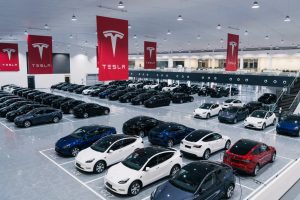- 📈 Bloomberg predicted in 2016 that EVs could lead to an oil market crash by 2023.
- 🌍 EV sales have surged since 2016, with estimates reaching 41.7 million EVs on the roads in 2023.
- 🛢️ Bloomberg’s optimistic calculation of 15 barrels of oil demand reduction per EV is deemed too high, with current data showing EVs displace 1.8 million barrels of oil.
- 📉 Despite EV-related oil demand reduction, global oil consumption is still rising, reaching 101.7 million barrels per day in 2023.
- 💰 Oil prices face uncertainties as OPEC+ cuts production, non-OPEC producers thrive, and markets doubt sustained oil demand growth.
- 🌐 China and the EU, with significant EV market shares, lead in reducing oil demand growth.
- 📅 Predictions suggest that by mid to late 2025, EVs could subtract another million barrels of oil demand per day, challenging bullish oil market expectations.
- ⛽ While oil will still be needed, reduced consumption will make it cheaper and more accessible, impacting oil-producing governments’ influence.
- 🚗 Bloomberg’s EV prediction was close in terms of numbers but overly optimistic in its oil displacement calculations.
- 🤔 The future may see a significant shift in reliance on oil, marking the end of the “Oil Age” and impacting geopolitical dynamics.
In 2016, Bloomberg made bold predictions about the future of electric vehicles (EVs). Fast forward to 2023, it’s time to evaluate the accuracy of those forecasts.
The Rise of Electric Vehicles
Electric Vehicle Market Growth
Bloomberg foresaw a surge in the EV market by 2023, anticipating a substantial increase in electric vehicle adoption globally. The intervening years have witnessed a remarkable uptick in EV sales, driven by advancements in technology, increased environmental awareness, and governmental support.
Technological Advancements in EVs
The 2016 prediction highlighted expectations of significant technological strides in the EV sector. Evaluating the current landscape, innovations such as improved battery efficiency, longer ranges, and enhanced charging infrastructure have indeed become key features of the evolving EV market.
Challenges and Unforeseen Roadblocks
Infrastructure Challenges
While the EV market has flourished, challenges in developing robust charging infrastructure persist. The disparity between the increasing number of EVs and the slow-paced expansion of charging networks raises questions about the sector’s long-term sustainability.
Governmental Policies and EV Incentives
Bloomberg’s prediction also factored in the role of governmental policies in driving EV adoption. However, the effectiveness of these policies varies globally, with some regions experiencing more significant success than others.
Q&A Section
Q: How Accurate Were Bloomberg’s Predictions Regarding EV Market Growth?
A: Bloomberg’s foresight into the substantial growth of the EV market has proven accurate, aligning with the current upward trajectory in global EV adoption.
Q: Did Technological Advancements in EVs Align With Bloomberg’s Forecasts?
A: Yes, technological advancements, including improved battery efficiency and extended ranges, have exceeded Bloomberg’s 2016 predictions.
Q: What Challenges Did Bloomberg Fail to Anticipate in the EV Sector?
A: Bloomberg’s predictions did not fully account for the persistent challenges in establishing widespread charging infrastructure and the varied success of governmental policies across different regions.
Conclusion
In retrospect, Bloomberg’s 2016 predictions regarding the EV landscape were prescient in foreseeing the growth and technological advancements. However, challenges in infrastructure and policy implementation reveal the nuanced reality of the EV revolution.





